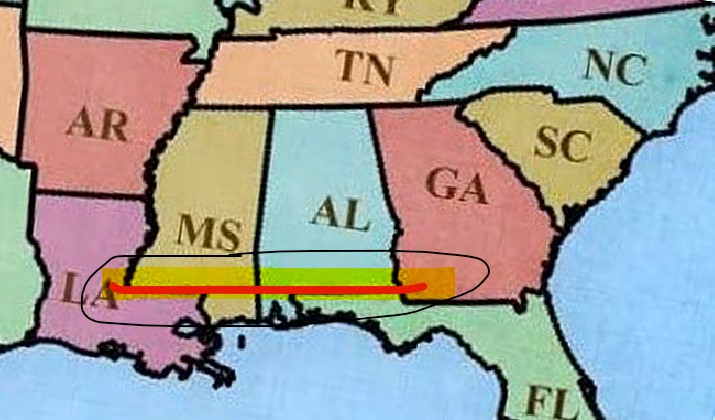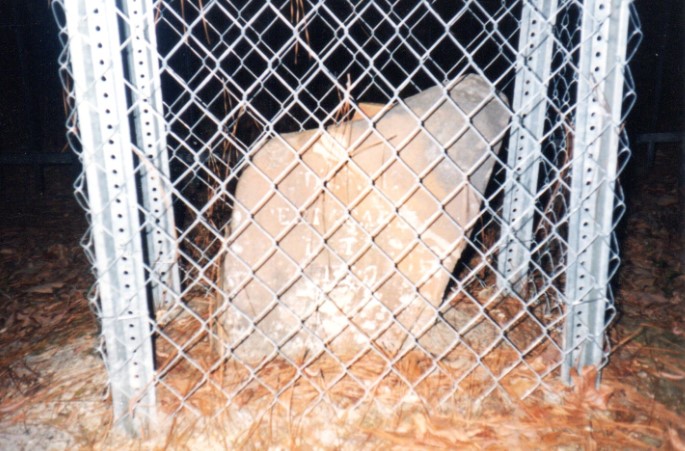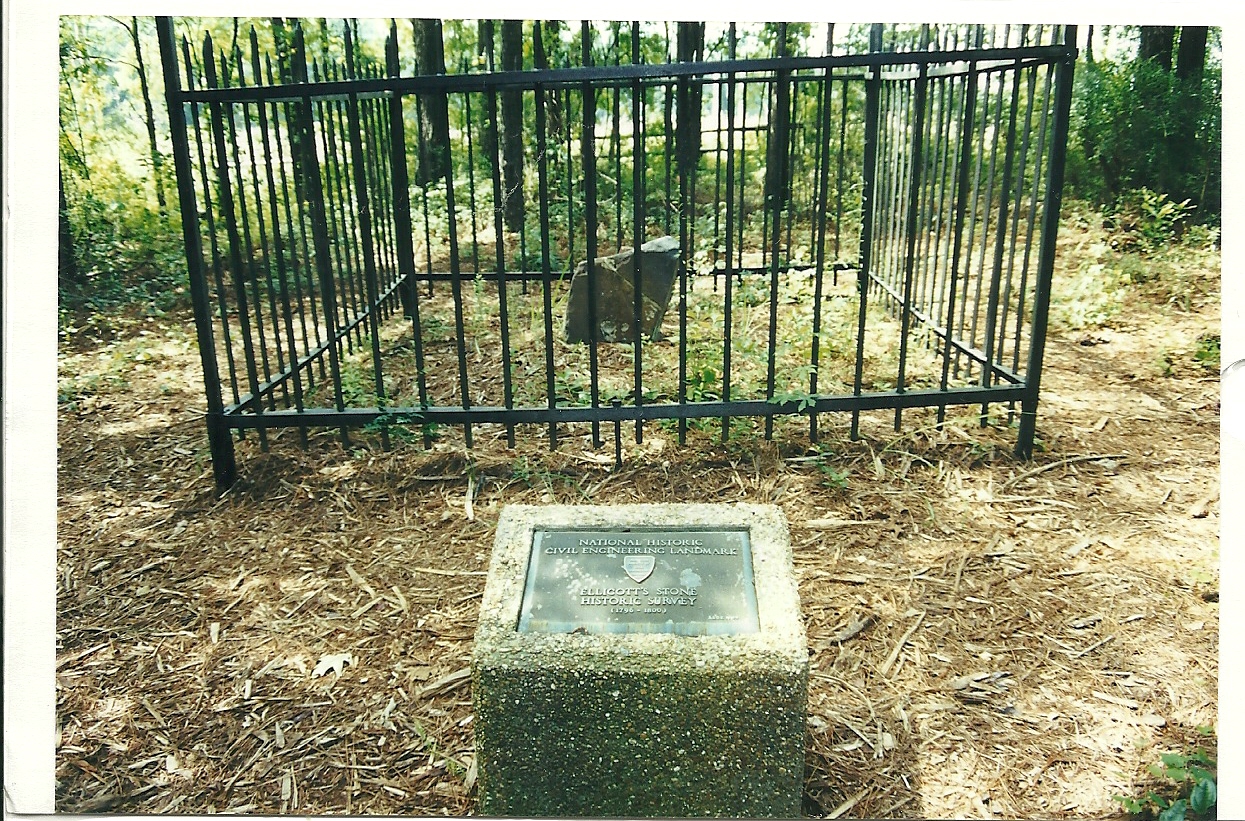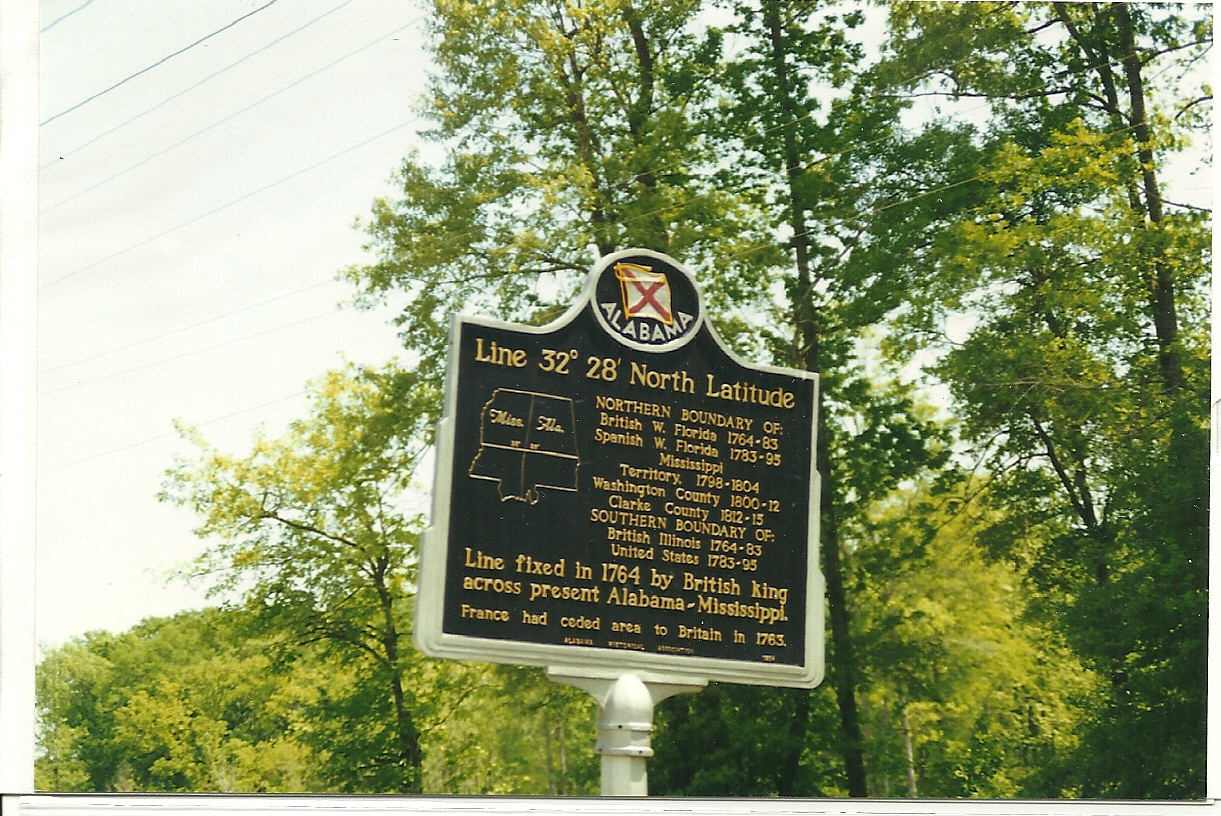Ron V's Interest in the Ellicott Stone
|
What Stone? When was it placed?
You can read all you want about the Ellicott Stone in Wikipedia (see ref. below). I'm interested in Alabama History, especially it's earliest history, however, I give other reasons at the end of this essay. Speaking of "early", the Ellicott Stone was placed as a boundary marker on April 10, 1799. That's just 2 years after George Washington was president. In fact, you'll see below that G.W. was still the prez when the treaty was negotiated that led to the placing of the stone marker. The United States had only existed for a dozen years in 1799. Florida was on Alabama's southern border but it still belonged to Spain. For many years, Spain, France, and England traded, sold, or fought over parts of what is now the United States. All these countries plus the United States argued over what territory belonged to which country. 1795 Treaty between the U.S. and Spain
In 1795, Spain controlled the port of New Orleans. Our country needed access to the port to reach the interior of our country but the Spanish didn't want to give up any more land than was necessary. Just the same, they also didn't want us getting friendly with the British once more, so they agreed on the Treaty of San Lorenzo. You can read all about the treaty on the U.S. State Department's website (see ref. below)(CLICK HERE). In a nutshell, Spain not only agreed to give us access to the port of New Orleans and the right to navigate the Mississippi River for free, they also agreed to establish our southern border at the 31st Parallel. The 31st Parallel and who was Ellicott?
In order sell land in the U.S. and not in Spanish West Florida, the border had to be surveyed. For future surveyors to refer to that border, there needed to be a marker. Four years after the treaty was signed (1799), surveyor Andrew Ellicott placed that marker. The southern border of Alabama has changed somewhat since then but the 31st Parallel still marks part of the border. Look at any map of the U.S. Notice what looks like a straight line along Mississippi and Alabama's southern borders? That's the 31st Parallel. It also divides Alabama and Florida east of Baldwin County, AL.  Some Photos
I took this really poor photo 20 or 25 years ago (don't fear, better ones are below).  (photo by Ron.V) Fortunately, my cousin who is an author and excellent photographer took a much better photo of the stone prior to it being wrapped in chain link to prevent vandals from harming it. By the way, here's his website on Facebook: https://www.facebook.com/legacy/notes/10151958333640980/  (photo courtesy of Jerry C. Smith, author of Growing up in the Magic City and other works) The stone is out in the woods and some distance from the highway. Fortunately, Cousin Jerry also took this photo of the highway marker.  (photo courtesy of Jerry C. Smith) It would appear from info I've found on the net that this highway marker has been damaged and replaced, perhaps more than once. Just so it is clear, the horizontal line shown splitting the two states in half appears to be mislabeled as the 31st Parallel. According to the Surveyors Historical Society, Wikipedia, and other websites, the 31st Parallel marks Alabama's southern border with Florida. On a side note, the stone is not currently on Alabama's southern border, it is north of Mobile, AL on U.S. Hwy 43. Borders have changed a bit since 1799. See Google Maps: https://goo.gl/maps/p615xgHoiBxkQgAy7 - References -
For more info, please visit the following links:
Conclusion
I mentioned at the beginning of this essay that I have other reasons for my interest in the Ellicott Stone and how it relates to Alabama History. I'm very, very interested in where my ancestors lived, when they lived there, when they moved, and any reasons why they moved at that particular time. Some people are adventurers and don't mind being pioneers of a new place. Others prefer to wait it out to see how well others do before they risk danger to their family and belongings. My Vincent ancestors appear to belong to the latter group although all early Americans experienced a number of dangers that we don't comprehend today. My 2nd-great-grandfather, John Vincent, was born in 1787 which was the year the United States became a country. He lived the last years of his life in Alabama. His son, my great-grandfather Aaron Vincent was born in Alabama in 1835. However, it seems that my 2nd-great-grandfather John Vincent didn't move to Alabama until about the time his son Aaron was born. Why? One of the first things I wanted to know was when Alabama Territory was first settled, what were it's borders, and so on. The Ellicott Stone plays an important part of that history. To read more about John Vincent (1787-1871), please visit his page at my lineage website: https://vincentfamily.org/Ancestors/07_John_Vincent_%281787-1871%29/index.htm ~ END ~
|